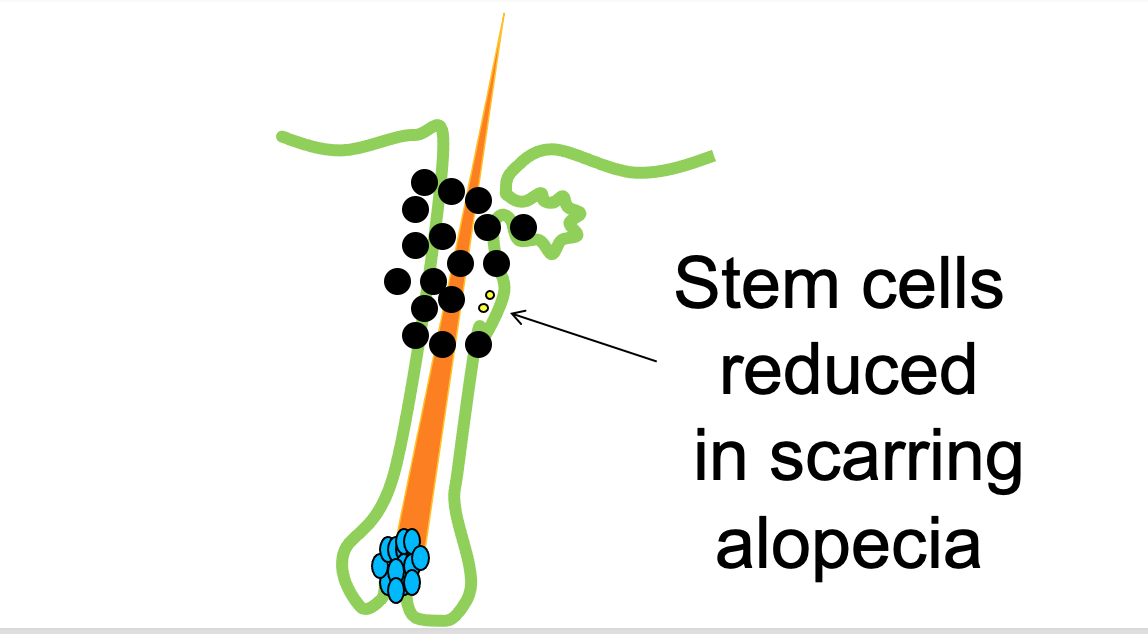National Scarring Alopecia Awareness Month (Day 5, Fact 5): Scarring Alopecias Are Associated with Inflammation within the Follicle.
Scarring Alopecias Are Associated with Inflammation within the Upper Parts of the Hair Follicle.
The main scarring alopecias are associated with inflammation in the upper part of the hair follicle. When you perform a biopsy of a patient with an active scarring alopecia, there’s one finding that is often noted when one looks at that biopsy under the microscope: inflammation!
Inflammation in the primary scarring alopecias commonly occurs in a consistent location for every scarring alopecia - in the upper part of the follicle. This part of the follicle is known as the “isthmus.”
The isthmus is home to some of the most precious cells of the hair follicle known as stem cells. Stem cells are cells that hide out in reserve and can produce a brand new hair when called upon to do so during each hair cycle.
This inflammation that accumulates in the isthmus is felt to contribute to a destruction of stem cells.
Inflammation in th primary scarring alopecias occurs in the upper parts of the hair follicle known as the isthmus. This inflammation contributes to the progressive loss of stem cells. In some scarring alopecias, this loss of stem cells appears to be due to the death of stem cells. In others scarring alopecias, death of stem cells may occur along side a transition of stem cells to other types of cells that have no regenerative ability. This is called the epithelial mesenchymal transition or EMT.
Recent research also suggests that inflammation in the isthmus also encourages many stem cells to quit their job as stem cells and transform to other types of cells (a process called epithelial mesencyhmal transition or EMT).
Scarring Alopecias are Associated with Loss of Immune Privilege
To hair researchers, the inflammation that accumulates in the isthmus indicates a loss of something called “immune privilege.” Normally, the human body does absolutely everything it can to protect these precious stem cells from anything that could damage them. Normally, inflammatory cells in the blood stream and skin are not allowed access to stem cells.
In scarring alopecias, these steps that are supposed to protect the stem cells break down. Inflammation accumulates around the isthmus and stem cells start disappearing. The ability of that follicle to make a new hair again progressively dwindles. Loss of immune privilege is a key area of hair research.
The Clinical Connection: What do patients experience ?
A patient with scarring alopecia does not shout out that their stem cells are disappearing. They do not tell their doctors that their has been a loss of immune privilege. Patients do however report that their scalp itches, or burns or is tender or is red or has more shedding than they think is normal or they are developing areas of hair loss.
This article was written by Dr. Jeff Donovan, a Canadian and US board certified dermatologist specializing exclusively in hair loss.




